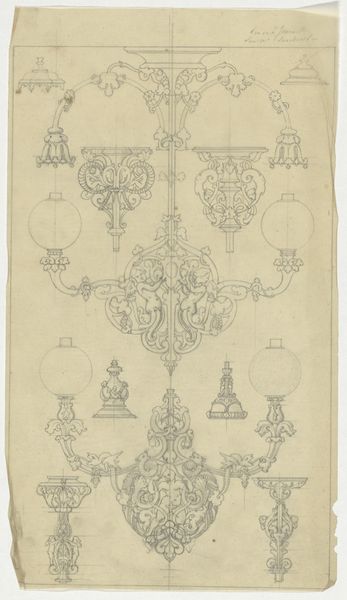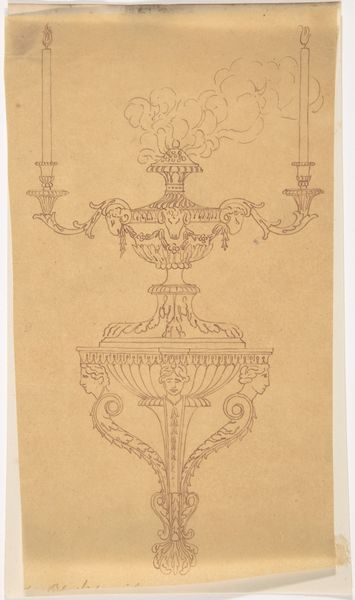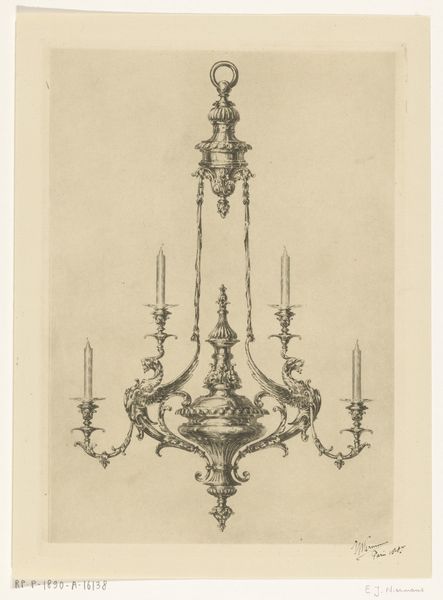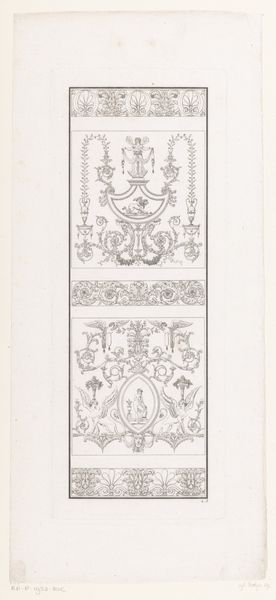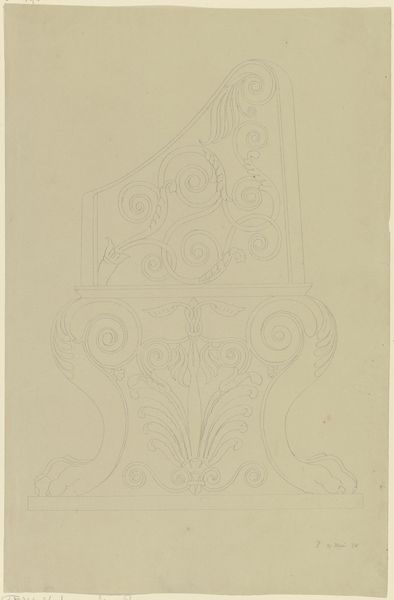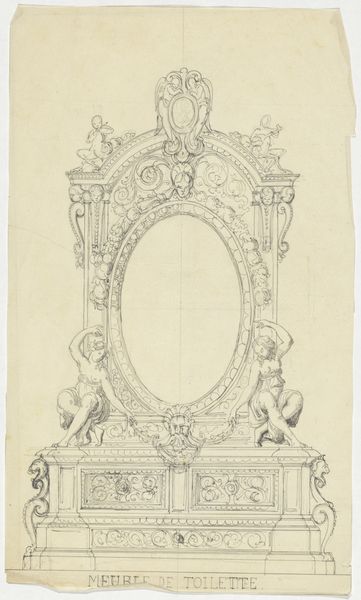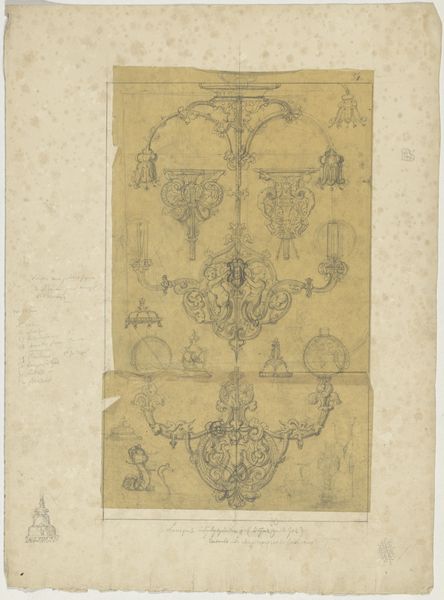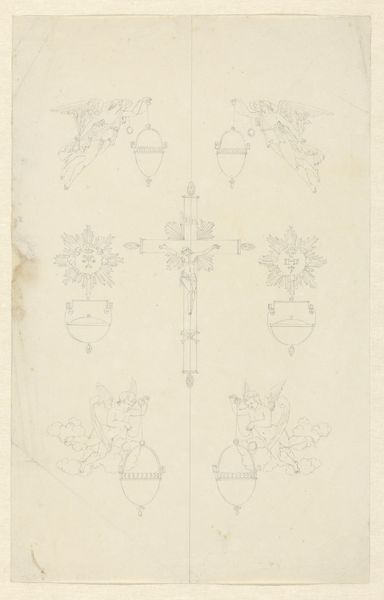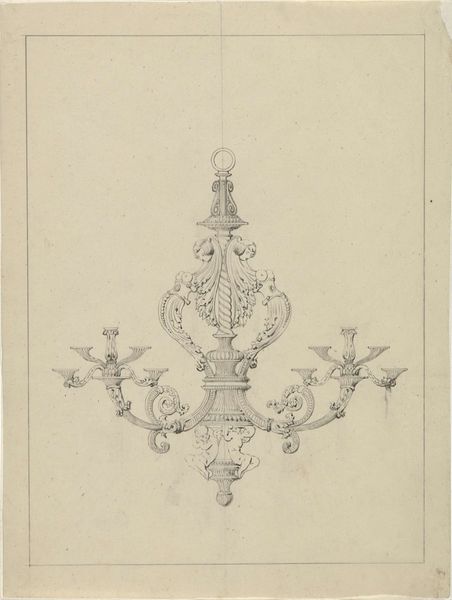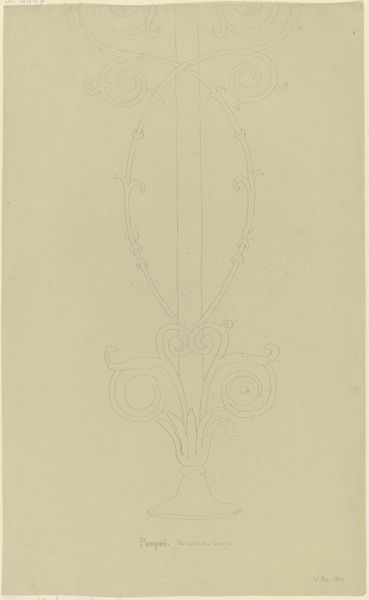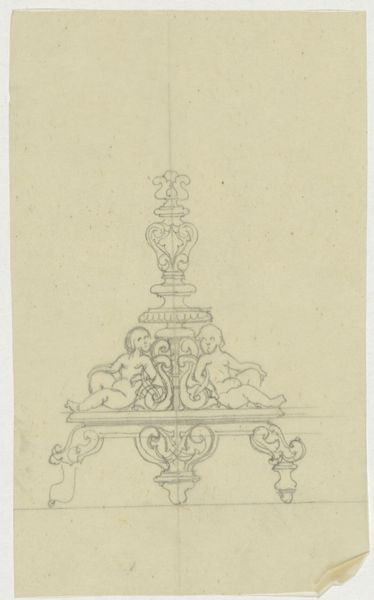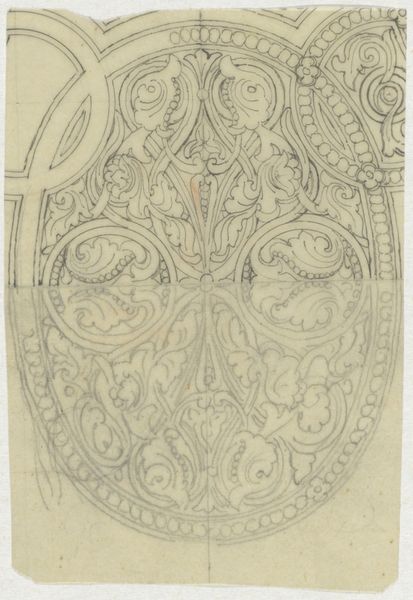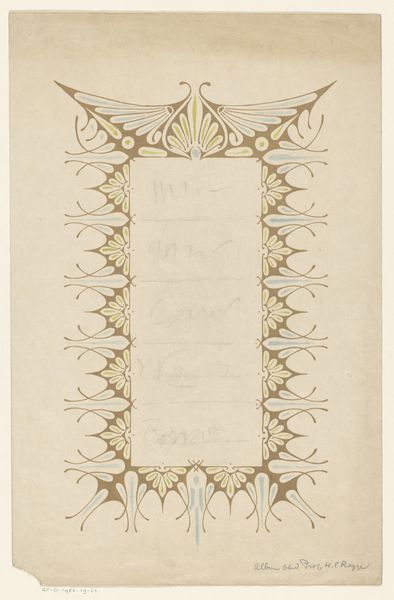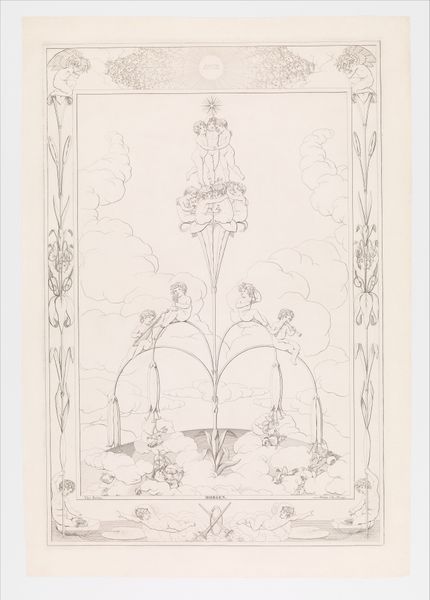
drawing, pencil
#
drawing
#
form
#
geometric
#
pencil
#
line
#
academic-art
Dimensions: height 254 mm, width 384 mm
Copyright: Rijks Museum: Open Domain
Editor: This drawing, "Olie- en azijnstel en twee zoutvaten," or Oil and Vinegar Set with Two Salt Cellars, made with pencil around 1830-1850 by Firma Feuchère, features an array of elaborately designed tableware. The fine lines create a delicate, almost ethereal feel, but also a sense of intense ornamentation. What strikes you about this composition? Curator: The visual arrangement orchestrates a complex dialogue between line and form. Note the academic precision with which each element is rendered. How do these geometric forms interact? Do you observe a hierarchy or pattern in the visual structure? Editor: I see the repetition of curvilinear forms, especially in the handles of the oil and vinegar cruets, mirrored in the stands of the salt cellars. The central candelabra or cruet stand echoes those shapes but with more vertical emphasis. Does the symmetry point to a specific design philosophy of the period? Curator: Precisely. The drawing exemplifies a pursuit of formal harmony, which involves symmetry. Consider, though, where that symmetry subtly deviates, and what those disruptions might signify within the broader composition. Are the patterns identical or similar in proportion? Editor: Good question. The decorative patterns differ between objects, despite the echoing shapes. It is like variations on a theme, isn't it? The candelabra has larger, bolder leaf motifs, while the cruets feature more intricate figure work. I now better see the push and pull between unity and variation. Thank you. Curator: Indeed. Formal analysis enables a vocabulary for describing how art conveys meaning through its visual construction. My pleasure.
Comments
No comments
Be the first to comment and join the conversation on the ultimate creative platform.
